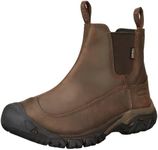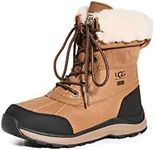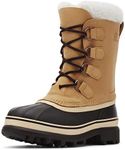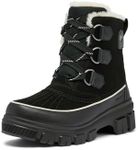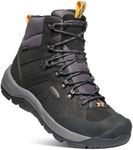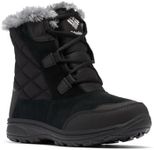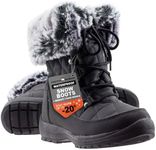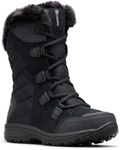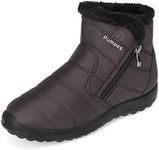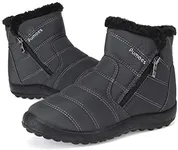Buying Guide for the Best Snow Boots With Arch Support
When it comes to picking the right snow boots with arch support, it's essential to consider several key factors to ensure you get the best fit for your needs. Snow boots are designed to keep your feet warm and dry in cold, snowy conditions, while arch support is crucial for maintaining foot health and comfort, especially if you have specific foot conditions or plan to wear the boots for extended periods. Here are the key specifications you should focus on when choosing snow boots with arch support.Arch SupportArch support refers to the structure within the boot that supports the arch of your foot. This is important because proper arch support can help prevent foot pain, improve posture, and reduce strain on your feet and legs. When evaluating arch support, consider whether you have high, medium, or low arches. High arches need more cushioning and support, medium arches benefit from moderate support, and low arches (or flat feet) require firm support to prevent overpronation. Choose boots that match your arch type for optimal comfort and support.
InsulationInsulation in snow boots is what keeps your feet warm in cold weather. This is crucial for maintaining comfort and preventing frostbite. Insulation is typically measured in grams, with higher numbers indicating more warmth. For mild winter conditions, 200-400 grams of insulation may be sufficient. For colder climates or extended outdoor activities, look for boots with 600-800 grams or more. Consider your typical winter weather and activity level to determine the right amount of insulation for you.
WaterproofingWaterproofing ensures that your feet stay dry in wet, snowy conditions. This is important for comfort and to prevent issues like blisters or frostbite. Look for boots made with waterproof materials such as Gore-Tex or those with sealed seams. If you frequently encounter deep snow or slushy conditions, prioritize boots with high waterproof ratings. For less extreme conditions, water-resistant materials may suffice.
TractionTraction refers to the grip the boots provide on slippery surfaces. This is important for safety, as it helps prevent slips and falls on ice and snow. Boots with deep, multi-directional lugs on the outsole offer better traction. If you plan to walk on icy or uneven terrain, look for boots with aggressive tread patterns or those compatible with additional traction devices like crampons. For urban environments, moderate traction may be adequate.
Fit and ComfortFit and comfort are crucial for any footwear, but especially for snow boots that you may wear for extended periods. A good fit prevents blisters and ensures proper support. When trying on boots, wear the socks you plan to use and ensure there's enough room to wiggle your toes. The boots should feel snug but not tight, with no pinching or pressure points. Consider features like padded collars, cushioned insoles, and adjustable laces or straps for added comfort.
DurabilityDurability refers to how well the boots can withstand wear and tear over time. This is important for ensuring that your investment lasts through multiple winters. Look for boots made with high-quality materials such as leather or durable synthetics. Reinforced areas like the toe and heel can add to the boot's longevity. If you plan to use the boots frequently or in harsh conditions, prioritize durability to ensure they hold up well.
